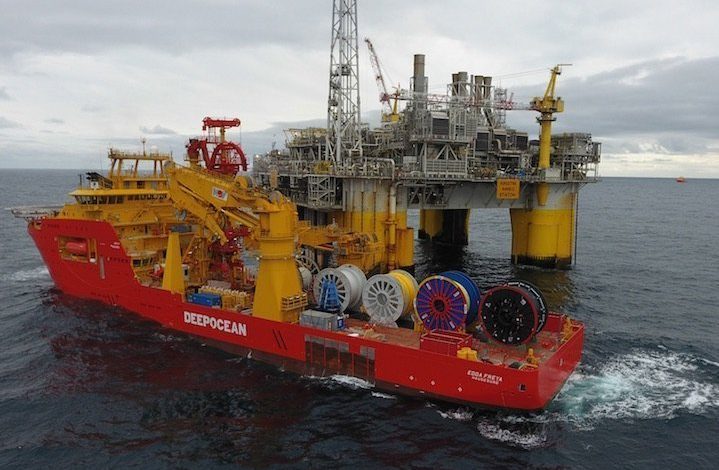The subsea boom, bust and beyond

Jeremy Punnett from Stamford Maritime on the year ahead in the subsea sector.
From 2005 the subsea industry witnessed a remarkable period of growth, felt a slump in 2007 (that felt brutal at the time), and then the quick rebound in 2008. However, from 2008 to 2014 I believe the industry experienced an investment boom on the supply side in many ways similar to the dot com boom of the early century.
Unfortunately, the boom was a debt-funded boom and therefore likely to be more painful and take longer to clear than an equity funded bubble (like the dot com craze). This has taken place in the midst of a major technological change in the oil industry where shale oil looks to become the marginal product of choice for E&P companies. But if the boom brought project and engineering skills to the fore I believe this slump will bring a new, and healthy, focus on financial discipline to the vanguard as the industry adapts to long-term cost pressures that simply didn’t exist before.
This backdrop forms the basis of my thinking for how 2017 will play out for offshore. Having predicted 9 of the 0 London house price crashes I would therefore suggest these thoughts are treated as discussion points rather than a cross to hang me on come December!
The supply side of the industry is clear: there has been a massive overbuilding of capacity and it will take a long time to clear. This will lead to lower utilisation and day rates for at least all of 2017 in nearly all markets of the world. The banks will come to the fore in 2017 as their financial position in many of the subsea vessels is now threatened. Major restructurings will take place this year and not all companies will make it as the cash flow constraint binds companies to loan commitments made in better times. In Norway Farstad urgently needs a new investor as does Ezra in Asia; in reality both companies, and many others, are likely to find a stable financial solution only when banks start to take write downs on some of the loans and convert them to equity with new capital brought in.
Asset classes that had previously been scarce are now in such abundance one wonders how long the backlog will take to clear. Pipelay and Dive Support, the two most specific assets have unprecedented capacity with some tonnage still to deliver. Brokers tell me the CEONA Amazon cannot get offers anywhere near the $50m level.
Despite oil prices rebounding the demand for offshore remains weak compared to previous levels. E&P companies are targeting major investments in shale (higher OPEX/ lower CAPEX/ quicker payback) and seeking to drive down procurement costs on those projects that do proceed.
Contractors bidding lump sum for those contracts may well find they have the ‘winners curse’ where they are forced to deliver something for more than they bid. E&P companies know this and will therefore gravitate to the larger companies.
One major mistake the industry (and no one more than me) made was believing Inspection, Repair, and Maintenance (IRM) would be the saviour in a downturn. E&P companies have cut this spend more aggressively than was previously believed possible, Woodmac notes OPEX dropped from $30/bbl in 2014 to $15/bbl in 2016. Large contractors have sent assets to compete in this market making life even harder for smaller ones. Subsea 7, for example, appears to have made a corporate decision to remain one of the largest dive contractors in the world, and is bidding extremely aggressively and deploying its base strategically. There appears to be a lot of IRM tendering at the moment but it’s at rock bottom rates.
It all sounds a bit depressing, and I think it will be for 2017. These results are baked in: E&P companies simply don’t have enough engineering resource to turn on the project tap even if prices doubled (which no one thinks possible and therefore may happen). The general feeling in the industry seems to be 2018 will get better but we don’t have a good story to explain why.
The good news is capital is still available with M2, DeepOcean, and Reach Subsea recently raising significant sums. This isn’t the end of offshore, long-term I remain a believer, but this will be a very painful year as contractors start to exhaust any cash resources they have and projects they bid for lock-in low rates for the future.
